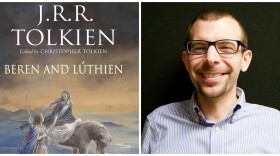Since the week before it was published, Michael Wolff's “Fire and Fury: Inside the Trump White House” has been, by far, the most-talked about book in the country. The furor, prompted by an angry denunciation-by-tweet from the President, a cease and desist letter from his lawyers and salacious details from the book making their way into the press, immediately catapulted it to bestseller status. Being a political junkie, of course I couldn't resist giving it a read. I rushed through it in just a few days.
As enjoyable a read as “Fire and Fury” was, the deep irony of the book is it would likely have received little attention had it not been for the attacks by the Trump Administration. In attempting to stop the book, they instead gave Wolff the best gift an author could hope for: masses of free publicity. The reality is the book doesn’t contain a lot of new information, at least not in the big picture. Wolff portrays the President as a man uninterested in the basic functions of his job and quite out of his depth. According to Wolff, he didn't even want to win. The campaign was meant to bolster his own personal brand and, if Wolff is to be believed, position him to launch a television network that would compete with Fox News. This is a narrative you didn't have to read the book to be familiar with.
There is also a definite shift partway through the book. While the story begins broadly, gradually we're left mostly with Steve Bannon's point of view. The reader might not be wrong to suspect that towards the end of Wolff’s research, the former chief strategist for the President was almost the only source still talking. This makes the last part of the book less interesting as a result. Wolff seems to give Bannon too much credit as a political operator, and Bannon's apparent inability to stop himself from talking led shortly to his ouster from Breitbart. Bannon's rapid fall after the book's publication marks a curious end to a curious career.
Some of the particular anecdotes in the book make for interesting reading, but some details have come under fire as possibly inaccurate. While I can’t speak to the claims of inaccurate details, some criticisms of Wolff seem overblown. In the introduction, Wolff notes that he believes almost all of his sources in the White House were lying to him about things that happened. His work was to triangulate based on what he knew, and he presents the recounting of events he finds most plausible. In doing so, he surely got some things wrong—and yet, this is the same work historians do every day. Perhaps Wolff is getting more flak than he deserves for what was an honest effort.
If you can get your hands on a copy of “Fire and Fury,” you'll likely find it worth your time. But if not, “Fire and Fury” is surely just the first of many inside looks at a chaotic time in the Trump White House.
Reviewer Brady Clemens is the district consultant librarian at Schlow Centre Region Library.






